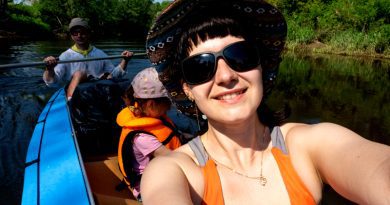
Ensuring a Good Night’s Sleep While Camping
A Guide Through the Wilderness Slumber
The stars were a canopy above us, more numerous than the grains of sand on the river bank where we pitched our tent. As night fell over our campsite in the shadow of towering pines, a question as profound as the quiet around us stirred the mind, “What’s the best way to ensure a good night’s sleep while camping?” For all the beauty and tranquility of the great outdoors, securing a restful night under the stars is an art—one crafted from experience and thoughtful preparation.
Sleeping in the wilderness encapsulates the essence of adventure, but it brings a unique set of challenges that can transform what should be a restful night under the stars into a trial of endurance. The basic comforts of home are absent in the wild, and each aspect of the natural environment—from the hard, rocky ground to the cacophony of nocturnal wildlife sounds—can disrupt sleep.
Challenges of Wilderness Slumber
Temperature Regulation: One of the most significant challenges is managing the fluctuating temperatures that can drop dramatically once the sun sets. The lack of traditional insulation means the cold can seep into every corner of your tent, making effective temperature regulation a top priority for any camper.
Comfort on Rocky Terrain: The natural terrain rarely offers the flat, cushioned surfaces we’re accustomed to at home. Instead, campers often find themselves trying to sleep on uneven, rocky, or root-filled surfaces, which can make finding a comfortable sleeping position nearly impossible. This discomfort not only affects sleep quality but can lead to aches and stiffness the following day.
Noise from Wildlife: While the sounds of nature can be soothing, the unexpected noises of wildlife during the night—from the rustling of small mammals in the underbrush to the calls of nocturnal predators—can startle and keep even the deepest sleeper on edge.
Strategic Solutions for Ensuring Comfortable Wilderness Sleep
Addressing these challenges effectively requires a well-thought-out strategy that includes selecting the right gear, preparing the campsite environment, and personal habits adjustment. Here’s a detailed look at each solution:
1. Optimal Gear Selection:
- High-Quality Sleeping Pad: Investing in a sleeping pad with a high R-value is crucial. The R-value measures the pad’s ability to insulate you from the cold ground. A higher R-value pad provides better insulation, keeping you warm and cushioning you against the hard and uneven ground.
- Adequate Sleeping Bag: Your choice of sleeping bag should match the climate of your camping area. A three-season sleeping bag is suitable for most conditions, adaptable from spring through fall. For colder nights, adding a sleeping bag liner can provide additional warmth without the bulk of a heavier sleeping bag.
2. Campsite Selection and Setup:
- Sheltered and Flat Location: Choose a campsite that offers natural shelter from the wind, such as behind large rocks or dense tree lines, and is on flat ground. This reduces the exposure to cold winds and water runoff, which can pool in depressions and soak through the tent floor.
3. Environmental Management:
- Utilize Windbreaks: If natural shelters are not available, create windbreaks using extra tarps or by strategically positioning your tent behind other barriers.
- Noise Reduction Tactics: Earplugs can be an essential item in a camper’s toolkit, helping to block out disruptive sounds and ensure a quieter sleeping environment.
4. Personal Preparation:
- Diet and Stimulant Consumption: Consuming a light meal for dinner and avoiding stimulants like caffeine close to bedtime can significantly improve sleep quality by making it easier to fall and stay asleep.
- Appropriate Sleepwear: Dressing for bed in clean, dry socks and a warm hat helps maintain body temperature throughout the night, ensuring comfort and warmth.
By integrating these strategies, campers can effectively mitigate the common discomforts associated with sleeping outdoors. This holistic approach not only enhances the camping experience but also ensures that each night spent in the wilderness contributes positively to the adventure, rather than detracting from it.
Necessary Resources and Tools
To implement these solutions effectively, you’ll need:
- High-R-value sleeping pad
- Appropriate sleeping bag for the climate
- Sleeping bag liner for extra insulation
- Earplugs for noise management
- Comfortable sleepwear, warm socks, and a hat
- Tent with good insulation and ventilation
- Portable windbreaks, if necessary
Embracing Nighttime in Nature
As I lay in my tent listening to the gentle rustle of leaves and distant calls of nocturnal creatures, I realized that a good night’s sleep while camping isn’t just about comfort; it’s about harmonizing with the environment. Each element of preparation—from choosing the right gear to selecting the perfect campsite—plays a crucial role in transforming the rugged outdoors into a restful retreat. By embracing these practices, we not only enhance our sleeping experience but deepen our connection with the natural world, ensuring that each night spent under the stars is as rejuvenating as it is memorable. In the wilderness, the night is not an obstacle but an invitation to a deeper understanding and appreciation of the world around us.






